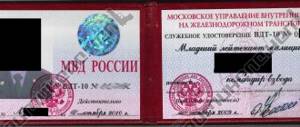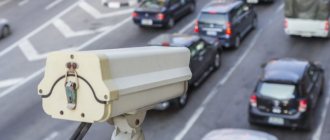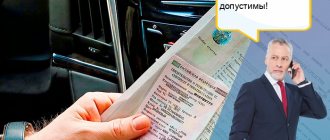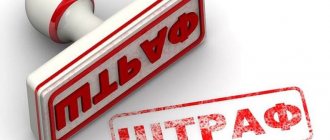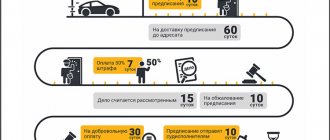As soon as Internet services were launched, through which it is possible to pay fines for traffic violations in real time, service employees immediately began to be inundated with letters asking why the traffic police fine had been paid, but continued to be listed as unpaid.
Today the system is more or less debugged, but not fully improved, because often receipts paid through the Internet service never reach their intended destination.
That’s why every car owner should know how to report payment of a traffic fine to the traffic police via the Internet.
Why is the fine listed as unpaid?
It turns out that a lot depends on the service through which the fine for traffic violation is repaid.
This means that if you chose a little-known service, bank or other office to make the payment, then most likely the penalties will remain listed as unpaid.
According to the official website of the traffic police, currently the process of transferring information has stabilized, but in some regions of our country experts recommend making payments to the state budget through official services or national banks, such as Sberbank.
The principle of payment of a traffic police fine for violating traffic rules is simple:
- using the specified details, a certain amount of money is paid;
- the service that accepted your payment synchronizes with the GIS GMP and transmits this data to it;
- The treasury transmits information to the traffic police.
It is during this entire procedure that a failure may occur in the program of one of the “intermediaries,” as a result of which it turns out that the administrative fine, although paid, is still registered with the debtor.
Receipt for payment of a traffic police fine - how to get it online
A receipt for repayment of a traffic police fine may be lost, forgotten, or not even received yet, but the car owner urgently needs a sample of it. What to do in this case?
Modern online services will help you not only find a fine by order number and the amount to be paid, but also find out the details for payment, and, if necessary, make the repayment online.
The payment document can be obtained from the traffic police online service. To do this, you do not have to register, you can simply enter the fines checking section and indicate the car number, as well as the STS number and receive information about all unpaid penalties. By selecting the desired item, you can print the document or save details for payment using another method. The traffic police service also offers to make a virtual payment using any credit card.
Government Services is the largest online service for clarifying and paying any taxes, fees and fines. The only apparent disadvantage is the mandatory registration by phone number. But after going through it once, any person will be able to have round-the-clock access to the database of payments that concern him personally. Here you can print a sample document or rewrite the details for further payment. You can get them, including by the resolution number.
We remove the paid fine from the State Traffic Inspectorate database
According to Article 32.2, Part 8 of the Code of Administrative Offenses, the banking organization and other services through which the fine is paid must immediately after this procedure transfer information about the payment to the GIS GMP.
In turn, Article 32.2 part 8 of the Code of Administrative Offenses states:
“A bank or other credit organization, a federal postal service organization, a payment broker that carries out activities of accepting payments from individuals or a bank payment agent (subagent) operating in accordance with the Federal Law “On the National Payment System”, which pays the amount of the administrative fine, are obliged, immediately after receiving the payment by the person brought to administrative responsibility, to send data on the payment of the traffic police fine to the State Information System on State and Municipal Payments, provided for by the Federal Law of July 27, 2010 No. 210-FZ “On the organization of the provision of state and municipal services.”
From this we can conclude that a failure during the payment of an administrative fine may occur at the stage of transferring information from the treasury to the traffic police. How then can you notify the State Traffic Inspectorate about the payment?
If you deposit funds into the state treasury through a bank, you will be given a receipt for this payment, which will confirm the fact of payment.
And in order for the traffic police to take appropriate action, you should contact the nearest State Traffic Inspectorate office at your place of registration and give them a copy of the receipt for payment of the administrative penalty.
In this case, employees make changes to the database, and the debt automatically disappears.
How can you notify inspectors about the payment of fines through the Internet portal? In this case, everything is much simpler. When making a payment using the service, Internet banking, the system will prompt you to print a receipt.
In the case when the payment is made through intermediary services and not a bank, the receipt is sent to the email of the person who makes the payment.
Next, you can either print out the fine payment document or save an electronic version of the check on your computer so that you can use it in the future.
What to do if the traffic police fine is not displayed in the database?
The introduction of electronic payments for traffic police fines has significantly simplified the lives of motorists, but at the same time created conditions for new difficulties. Nowadays there are often situations in which the fine is actually paid, but this action is not displayed in the authority’s database. The authorized bodies have no other choice, so the “willful defaulter” is sent to the bailiffs.
Such incidents occur not only in the field of payment of fines; an imperfect system of electronic payments is observed in all areas. Today there are many services and payment systems that are simply impossible to optimize in one day. You will pay the fine, but if it does not reach the “destination”, then you will receive a notice from the bailiff. Don't panic if you have encountered such a problem. Finding out all the circumstances and establishing relations with the state will not be difficult.
How to send a receipt for payment of an administrative penalty to the traffic police?
Most car owners who often use Internet services to pay a traffic police fine know how to establish the fact of payment of an administrative penalty.
And for those who don’t know yet, we’ll tell you: you need to find in the search database the service through which you want to make a payment or just see if you have a fine (as a rule, these are the official websites of banks, the RSA service or the State Services portal) .
By going to the service’s website, you just need to provide some data (it all depends on the service program itself), and you will see data on penalties. As a rule, only unpaid fines are highlighted in the database.
And if you know for sure that just a few days ago you paid this particular fine, then what to do next, how to notify the traffic police officers about the payment?
There is nothing super complicated about this. You have two options to solve the problem:
- Go to the traffic police department nearest to your place of registration and provide them with a copy of the payment document.
- Send a notification/appeal to the email address of the State Traffic Inspectorate.
As for the first solution to the problem, we will not go into details, since everything is already clear. But let’s talk a little about the second option of notifying State Traffic Inspectorate employees about the payment.
The procedure for receiving notifications of traffic police fines
There have been video cameras on the roads for many years. A person who violates traffic rules may believe that his offense went unnoticed, but what is happening on the road is always recorded. The driver learns about the imposed administrative penalty through a notification.
The process of obtaining data on traffic violations:
- information from the cameras is read and sent to the traffic inspection department;
- the specialist prints out the photo and draws up a resolution;
- documents are sent by mail according to the place of registration of the owner of the vehicle.
This method is not always convenient, since the letter may be lost, the system may incorrectly identify the car, or it may turn out that the driver lives in another place. Any citizen with a mobile phone with Internet access can instantly find out about penalties. You can receive a notification in several ways:
- to a mobile phone number in the form of SMS;
- by email;
- through the government services portal;
- other types of mobile applications.
Each option is convenient in its own way and does not require special knowledge. Anyone can connect them. The main thing is to correctly understand how to receive notifications of traffic police fines by email or SMS.
Such methods are quite convenient, since everyone has a mobile communication device at hand. That is why at the government level it was decided to develop an alert about traffic police fines via SMS and email.
All portals containing information about collections have a convenient interface that allows you to quickly find the required information (official pages save the initially entered data and when you re-use the service, the fields are filled in automatically). Therefore, questions about how to ensure that traffic police fines are sent by email or SMS should not arise.
Responsibility for late payment
Often, motorists forget about the obligation to pay a fine, without thinking about what consequences this may lead to. Many may simply forget about their violation. If the driver does not pay the penalty within the period provided by law, his fine will increase to double the amount. The law allows the use of punishment in the form of detention for up to 15 days or undergoing special labor for a period of no more than 50 hours.
Notification to the traffic police about payment
In order to notify law enforcement officers that you have actually paid the administrative fine issued to you, you need to go to the official website of the State Traffic Inspectorate, where in the right column at the bottom there will be a column “Acceptance of appeals,” which you need to select.
After this, the service will display information on how to correctly send a request, after reading which you can proceed directly to creating the request itself by clicking on the appropriate button.
Next, the service will prompt you to select the region to which you want to send your appeal. The sequence itself depends on the region.
Then you will need to enter your personal data in the following fields:
- applicant's initials;
- exactly how you want to receive an answer;
- telephone number where you can be contacted;
- text of the appeal;
- we add screenshots, a photograph or a scanned version of the receipt, which confirms the fact of payment of the administrative fine;
- enter the captcha.
Once all fields are filled in, you can create and send a request by clicking the “Submit request” button.
A month is allocated to process this request, during which State Traffic Inspectorate employees must take all necessary measures to remove the fine from you.
Bottom line
To summarize, I would like to say that the receipt for payment of the fine must be sent to the State Traffic Inspectorate office. If the administrative penalty is paid, then information about this must be entered into the appropriate database.
The motorist can take a copy of the payment in person, as well as send a photographed or scanned document to the official website of the traffic police, using one of the provided methods. The driver has the right to choose the document delivery option at his own discretion.
Good luck on your journey!
What should I do if, after paying through the State Services portal, the fine has not been written off?
Today, many car owners pay administrative penalties through Internet portals, without thinking that the programs may fail. But faced with the fact that after payment of penalties they are still listed as unpaid, any person will begin to get nervous.
As statistics show, there are a lot of cases where the fine was paid, but it is still listed on the unified portal of State Services. And this can be explained very simply.
After you have paid penalties using the unified State Services portal, a message appears indicating information that the funds are processed and transferred within 14 business days.
And only after the specified period has passed, the funds will be received for their intended purpose, and the debt will be automatically removed from the database. Payments often go through in fewer days. Therefore, if you have become a hostage in just such a situation, then you should not worry.
What if we leave it as is?
The traffic police will forward the case to the bailiffs. Inspectors have the right only to remind the driver about unpaid fines and send the case to the bailiffs.
The bailiffs will add an enforcement fee. If the violator does not pay the traffic police fine after he was notified of the enforcement proceedings, the bailiffs may impose a new punishment. Enforcement fee - 7% of the fine amount, minimum 1000 rubles.
The debt will be removed from the account. If the debt is not repaid within this period, the bailiffs have the right to withdraw the amount of the debt from the bank account. It goes like this:
- by decision of the court, a decree for the collection of money is issued in the name of the debtor;
- the bailiff sends a request to the banks about the availability and status of the debtor’s bank accounts;
- the bailiff receives a response from the bank and sends an order to write off the money;
- bank decree - it transfers the required amount to the FSSP account. If there is not enough money, the bank will send the balance of the debt as soon as the money appears in the account.
They will be sentenced to arrest or forced labor. If you do not pay the FSSP fine, the court may impose administrative arrest for 15 days or compulsory work for up to 50 hours, impose a ban on registration actions - you will not be able to sell the car.
Your license will be suspended. If the amount of collection from the FSSP exceeds 10,000 rubles, the bailiff has the right to suspend the driver’s license until he pays the debt.
The traffic police and the FSSP will draw up a report on the violator on the road. Sometimes employees of the two departments organize raids on the roads to identify debtors. If the inspector finds out that the defaulter has an unpaid fine, he will be issued a report on the spot under Art. 20.25 Code of Administrative Offences. From this moment on, the violator will have 5 days to pay the fines.
